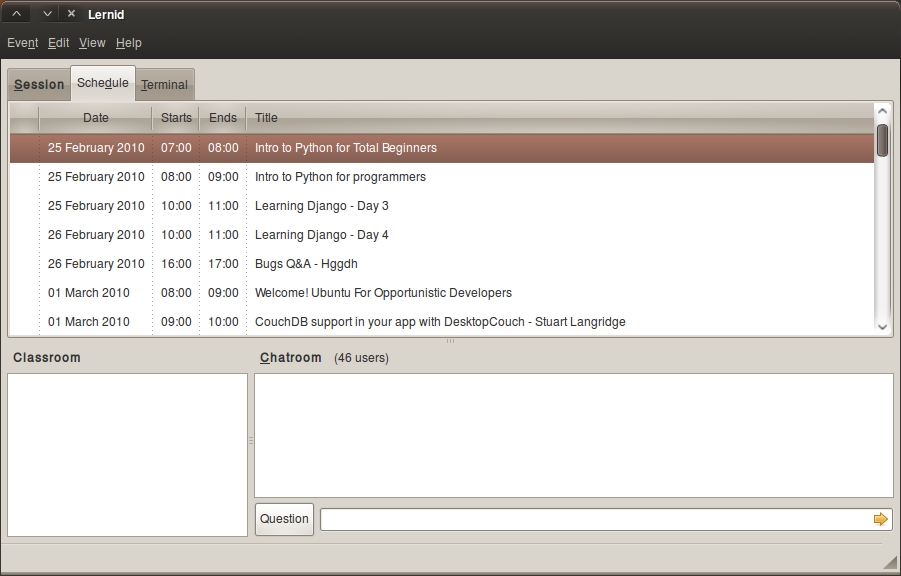I just got back from the Michigan Loco Ubuntu Global Bug Jam at SRT Solutions in Ann Arbor. I can safely report that Ubuntu 11.10 Oneiric Ocelot is a very nice Ubuntu Linux release which smoothly upgrades from Natty Narwhal. Admittedly, my Natty install didn’t have much customization to it since I had upgraded it from Lucid back in April.

After the upgrade, I worked with John S. Gruber on confirmed a Lernid package that he had put together with some new features. I ran into a nasty desktop couch bug that it seems has been tracked back to Erlang, but luckily, it just meant that my settings weren’t persisted. I was still able to test out all of the Lernid features that John wanted to test. I’ve always been interested in Lernid and I really appreciated the opportunity to help out. I also liked seeing how the –config option worked. Also, the new slideshow command that uses a url to push a slideshow down to clients from the host/instructor is pretty cool. Its an interesting feature and shows where the program might be going in the future.

Once I’d learned enough Lernid, I decided to focus on some things that I wanted to make sure worked. I did an apt-get install mod_mono and monodevelop. I’m extremely excited about this ubuntu release. For the first time in years, Ubuntu is shipping a reasonably modern version of Mono. I was able to get an ASP.NET MVC application running in MonoDevelop in minutes. Note that this includes the download and install of the mono runtime and IDE. To do the same with Visual Studio would take hours. MANY hours if you include installation of VS2010SP1 on top of VS2010. After that, I tried hosting the asp.net mvc app in Apache. I didn’t realize that someone had written an apache config front end. http://go-mono.com/config-mod-mono/ This let me type in a few things and have my application hosted in no time.

I guess that was about it. After we cleared out of the SRT office, I handed off the Amiga 1000 that has been with me for 24 years to our Michigan Loco leader, Craig Maloney. I’m a little sorry to see the Amiga 1000 go, but I am not the type of person who will resurrect it. I think it has found a nice new home with Craig.